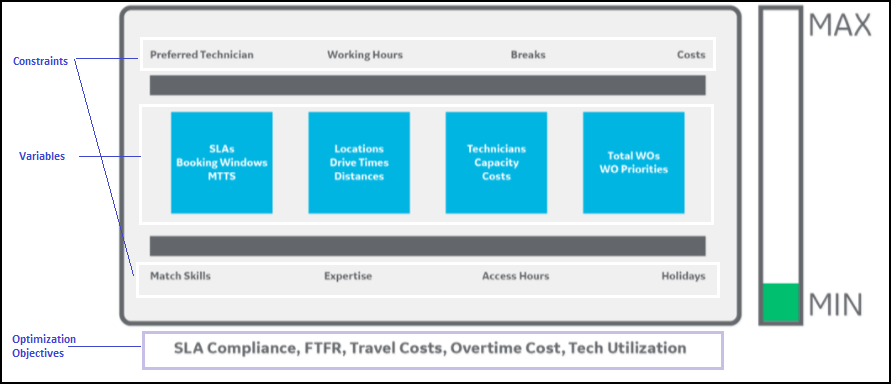Objectives of Schedule Optimization
The key objectives of Schedule Optimization are minimizing the scheduling cost of your field service organization and maximizing efficiency and utilization.
Schedule Optimization helps you to achieve the following optimization objectives:
• Increasing SLA compliance
• Increasing First Time Fix Rate (FTFR)
• Reducing overtime costs
• Increasing technician utilization

While achieving optimization, Schedule Optimization works with a few variables. The factors are different for each organization, and they have an impact on the optimization. Schedule Optimization considers the variables, and delivers the optimized schedule accordingly. The variables are:
• SLAs
• Booking windows
• Mean Time to Service (MTTS)
• Locations
• Drive times
• Distances
• Number of work orders
• Work order priorities
• Costs
• Number of technicians
• Capacity
Also, Schedule Optimization works with some constraints while delivering an optimized schedule. The constraints must be honored while scheduling. The constraints are:
• Mandatory or excluded technician constraints
• Working hours
• Breaks
• Costs
• Match skills
• Expertise
• Access hours
• Holidays
The following are the examples of constraints listed:
• If the work order specifies a mandatory technician, Schedule Optimization is bound to assign the work order to that technician.
• If a skill is required for a work order, Schedule Optimization is bound to assign the work order to a technician who has that expertise, even if costs are very high.